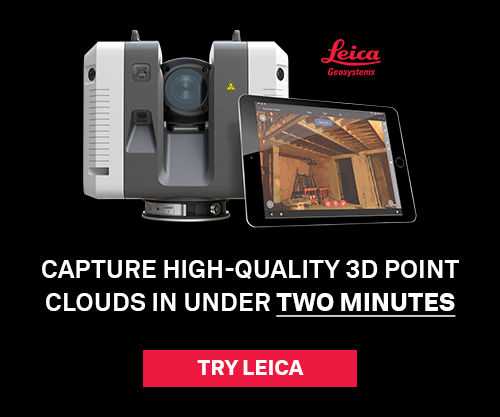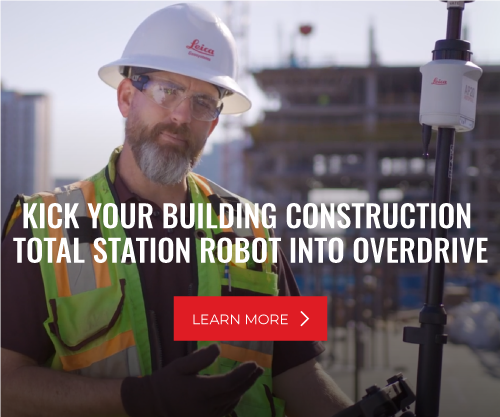It’s nearly impossible to envision a major construction worksite today without some form of laser scanning taking place. It’s easy to see why 3D laser scanning (3DLS) is so widespread. Projects using it benefit from:
- Reality capture speed and simplicity.
- Deviation analysis between as-designed and as-built models.
- Measurement accuracy for offsite fabrication and scope of work assessments.
- Cloud-based data for easy team access and collaboration.
- Safer measuring process with minimal fall hazards.
The 3DLS revolution is rapidly evolving with faster, smaller and smarter scanning technology such as handheld imaging laser scanners, robotic carriers and mobile platforms (i.e., Spot the robotic dog) and flying laser scanners for aerial applications. Photogrammetry images complete a mosaic that project leaders can use to design, estimate, schedule, monitor and document project activity.
Yet, a challenge remains: How do you make the most of the loads of data these tools generate? Studies show that the vast majority of all engineering and construction data goes unused.
Ryan Fluckiger, integrated construction manager at Mortenson, a 2023 ENR Top 30 Contractor, sums it up well: “It’s easy to collect data, but harder to actually analyze it and use it in a useful way.”
A Needle in a Haystack
Take reality capture. Nothing compares to point cloud precision for documenting as-built conditions. It’s a comparatively straightforward process to overlay point cloud data on the building information model (BIM) to detect conflicts early, heading off costly rework and schedule disruptions. But what about conflicts or discrepancies in the data?
Identifying every irregularity is a high-tech needle in a haystack situation, especially if manual cross-checking is required. It’s an issue Jennifer Wooles, director of virtual planning & construction at Massachusetts-based Columbia Construction, a specialist in complex projects, thinks about often.
“With so much of a project budget and our dependability relying on a key trade partner, it forced us to change how we could track progress,” Wooles explains. “We needed a better way to track installation progress properly, answer owners’ questions and feel comfortable about our reports.”

Finding the Needles with Reality Analysis
Reality analysis bridges the gap between reality capture data and useful, real-time project insight, increasing accountability and improving forecasting all while freeing up staff bandwidth for other tasks. Continued advances in software influence what you can expect from reality analysis, including:
- Simplified Workflow. Analyze scanned and photogrammetry data without adding more steps to the workflow. No need to change current workflow practices.
- Automated Quality Control. Automatically review installation issues by identifying discrepancies between BIM and 3DLS reality capture.
- Verified Pay Applications. Project managers compare a trade partner’s progress report versus the reality analytics report, which validates (or not) the work actually in place. “Project managers use it as a double-check,” says Mortenson’s Fluckiger, who relies on reality analysis through Hexagon’s Building Solutions.
- Accurate Progress Tracking. Superintendents use reality analytics to inform their schedules. Project leaders can compare planned versus actual progress by trade or area by percentage. Columbia’s Wooles, who also uses Hexagon’s reality analysis, says it saves her team three days a week in site walk-through inspections. It also provides verification for the gut assessment. Fluckiger says: “Project managers felt like they could rely on the tool without walking the space and saying ‘yeah, this looks like 40%.”
- Confident Owner Reports. OAC (owner/architect/contractor) status reports help build trust among key project stakeholders. No more data quality squabbles. “When owners see ‘percent complete’ of work, they are often initially skeptical,” says Wooles. “Collaborating with the owner and stakeholder through the platform has been crucial to our success.”
- More Trust in BIM. Less reliance on manual checking processes helps the team rally around the BIM model by simplifying as-built compliance.
- Improved Safety. Trade sequencing and scheduling is easier and more precise, limiting workplace congestion and improving safety monitoring.
Close the Loop on 3D Laser Scanning
Laser scanning has transformed commercial construction. The technology’s speed, precision, flexibility, autonomy and safety has compressed tasks that once took hours or even days down to minutes. That opens the door to continuous scanning as a fail-safe BIM check.
Leading contractors like Columbia and Mortenson recognize 3DLS and photogrammetry is only part of the story. Automating the comparison of actual versus planned models closes the loop on digital insight. Fast, high-quality laser scanning is the foundation of this approach.
Get in touch with a Leica Geosystems building construction specialist to learn how laser scanning and reality analysis can benefit your next project.






